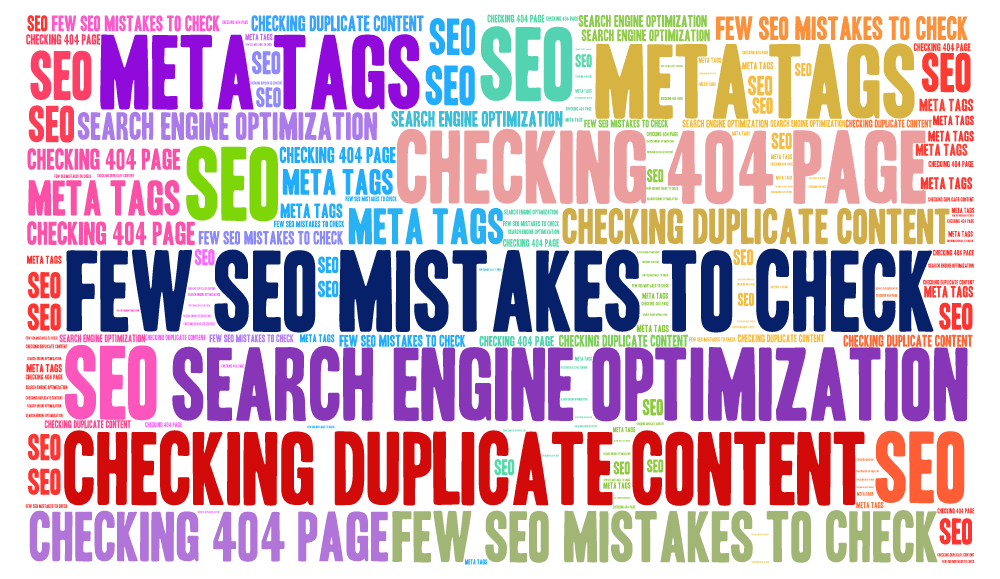How to Fix Common SEO Mistakes That Are Hurting Your Rankings
Table of Contents
- Introduction: How to Fix Common SEO Mistakes That Are Hurting Your Rankings
- Keyword Research: The Foundation of SEO
- On-Page Optimization: Enhancing Your Website’s Visibility
- Technical SEO: Improving Your Website’s Performance
- Content Creation: Engaging Your Audience
- Link Building: Boosting Your Website’s Authority
- Mobile Optimization: Prioritizing the Mobile User Experience
- Local SEO: Targeting Local Customers
- Conclusion
1. Introduction: How to Fix Common SEO Mistakes That Are Hurting Your Rankings
Is your website struggling to rank well on search engine results pages (SERPs)? You’re not alone. Many website owners encounter common SEO mistakes that hinder their rankings. Fortunately, with the right strategies, these mistakes can be remedied to enhance your website’s visibility, attract more organic traffic, and increase conversions.
In this comprehensive guide, we’ll discuss some of the most common SEO mistakes and provide actionable solutions to fix them. From keyword research to on-page optimization, technical SEO, content creation, link building, mobile optimization, and local SEO, we’ve got you covered. Let’s dive in and start improving your website’s rankings.
2. Keyword Research: The Foundation of SEO
Keyword research is the backbone of any successful SEO strategy. It involves identifying the words and phrases that your target audience is using to search for products or services similar to yours. By optimizing your website around these keywords, you can increase your chances of ranking higher on SERPs.
To conduct effective keyword research, start by brainstorming a list of relevant topics and industry-specific terms. Then, use keyword research tools like Google Keyword Planner, SEMrush, or Moz’s Keyword Explorer to refine your list and uncover valuable keyword opportunities. Focus on long-tail keywords that have lower competition but higher intent. Integrating these keywords naturally within your website’s content will help search engines understand the relevance of your pages to user queries.
3. On-Page Optimization: Enhancing Your Website’s Visibility
On-page optimization involves optimizing the elements on your website to improve its visibility on search engines. By optimizing various on-page elements, such as title tags, meta descriptions, headers, URLs, and image alt tags, you can send clear signals to search engines about the relevance and value of your content.
Start by ensuring that your title tags accurately represent the content on each page and incorporate your target keywords. Craft compelling meta descriptions to entice users to click on your links when they appear on SERPs. Use headers (H1, H2, etc.) to structure your content and make it more scannable. Optimizing URLs by including relevant keywords can also improve your website’s visibility.
Additionally, pay attention to image alt tags as they provide alternative text for search engines to understand the content of your images. By optimizing these on-page elements, you can significantly improve your website’s visibility and attract more organic traffic.
4. Technical SEO: Improving Your Website’s Performance
Technical SEO focuses on optimizing the technical aspects of your website to enhance its performance and crawlability by search engines. Ignoring technical SEO issues can negatively impact your website’s rankings and user experience.
Start by ensuring that your website has a proper site structure and navigation system. This helps search engines understand the hierarchy of your pages and crawl them more efficiently. Improve your website’s loading speed by optimizing images, reducing server response time, and leveraging browser caching. Ensure that your website is mobile-friendly and responsive, as Google now prioritizes mobile-first indexing.
Implementing structured data markup can also provide search engines with additional information about your content, enabling rich snippets to appear in search results. Regularly audit your website for broken links and fix them promptly to maintain a positive user experience and search engine visibility.
5. Content Creation: Engaging Your Audience
High-quality content is vital for engaging your target audience and improving your website’s SEO performance. Creating valuable, informative, and engaging content not only helps establish your website as an authority in your industry but also attracts more organic traffic and backlinks.
When creating content, consider the search intent behind keywords and create content that serves the needs of your target audience. This could include educational blog posts, how-to guides, case studies, or informative videos. Invest in creating long-form, comprehensive content that thoroughly covers a particular topic, as it tends to perform better on search engines.
Ensure that your content is well-structured, easy to read, and properly optimized. Use sub-headings, bulleted lists, and tables to enhance the readability and scannability of your content. Incorporate relevant keywords naturally throughout your content, without overstuffing.
6. Link Building: Boosting Your Website’s Authority
Link building plays a crucial role in improving your website’s authority and rankings. By acquiring high-quality backlinks from reputable websites, you signal to search engines that your website is trustworthy and relevant. However, it’s important to focus on quality rather than quantity when it comes to link building.
Start by conducting a backlink analysis of your competitors to identify potential link opportunities. Reach out to industry influencers, authoritative publications, or relevant websites and offer them valuable content in exchange for a backlink. Create shareable content that naturally attracts backlinks from other websites.
Additionally, consider internal linking by linking related pages within your own website. This helps search engines understand the structure of your website and improves user navigation. Regularly monitor your backlink profile and disavow any poor-quality or spammy backlinks that could negatively impact your website’s rankings.
7. Mobile Optimization: Prioritizing the Mobile User Experience
With the increasing use of mobile devices for internet browsing, prioritizing mobile optimization is crucial for improving your website’s rankings. Google now considers the mobile version of your website as the primary version for indexing and ranking.
Ensure that your website is mobile-friendly and responsive, offering a seamless user experience across different screen sizes. Optimize your website’s loading speed for mobile devices, as slower loading times can lead to higher bounce rates. Test your website on various mobile devices and fix any layout or functionality issues.
Implement mobile-specific features such as click-to-call buttons or easy-to-use contact forms to enhance the mobile user experience. Pay attention to local mobile search optimization by including location-specific keywords and optimizing your Google My Business listing.
8. Local SEO: Targeting Local Customers
If your business operates in a specific geographic area, optimizing for local SEO can help target local customers and improve your website’s rankings in local search results. Local SEO involves optimizing your website and online presence to appear more prominently when users search for local businesses or services.
Start by creating a Google My Business listing and ensuring that all information, such as your business name, address, phone number, and website, is accurate and consistent across all platforms. Encourage customers to leave reviews on your Google My Business listing, as positive reviews can improve your local visibility.
Optimize your website’s content with location-specific keywords and create location-specific landing pages if you serve multiple areas. Ensure that your website includes your business address and phone number in a crawlable format, such as text rather than an image.
Consider getting listed in local directories, industry-specific directories, and online review platforms to increase your online visibility. Engage with local communities through events or sponsorships to build awareness and attract local customers.
9. Conclusion
By avoiding common SEO mistakes and implementing the strategies outlined in this guide, you can significantly improve your website’s rankings and organic traffic. Remember, SEO is an ongoing process that requires continuous monitoring, testing, and optimization. Stay up-to-date with the latest trends and algorithm updates to ensure your website remains competitive in the search results.
Implementing solid keyword research, on-page optimization, technical SEO, content creation, link building, mobile optimization, and local SEO practices will help you establish a strong online presence and attract targeted organic traffic. Continuously monitor your website’s analytics, conduct regular audits, and adjust your strategy accordingly to maintain and grow your website’s rankings and visibility. Happy optimizing!



0 thoughts on “How to Fix Common SEO Mistakes That Are Hurting Your Rankings”